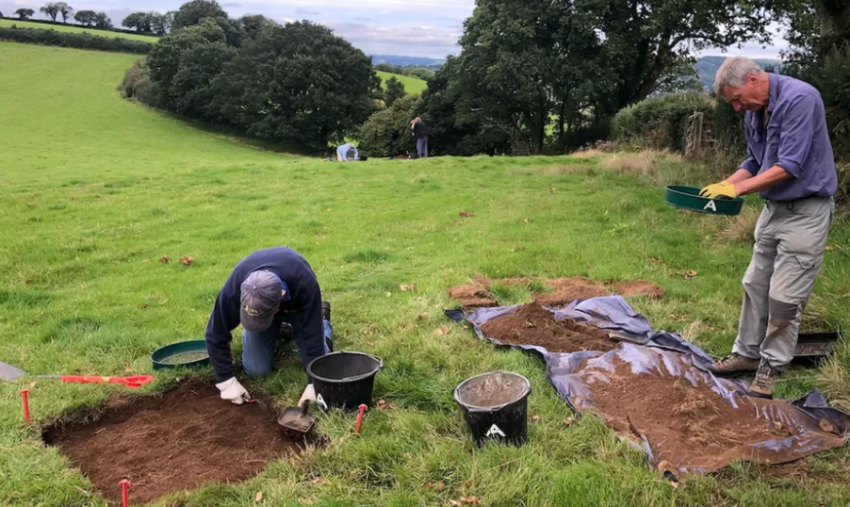Archaeologists investigating a high hill on Dartmoor, England believe they may have found a glimpse of the Stone Age.
More than 80 flints, possibly 8000 years old, were recovered during excavations on a farm near the village of Lustleigh. Experts think hunter-gatherers made these tools to search for deer grazing on the land below.
“This site raises interesting archaeological questions about how and why people used this landscape during a period on Dartmoor about which little is now known,” said Dr. Lee Bray of Dartmoor National Park Authority.
“It lies on a ridge between the high moors to the west and the Wrey Valley immediately to the east. The location may have provided hunter-gatherers with a good vantage point from which to observe game moving across the landscape.”
Dartmoor’s earliest inhabitants were hunter-gatherers, according to a third survey of the area by experts. All across the moor we can find archaeological evidence that we have occupied the landscape for many years, from the first ancient hunting communities to today’s mountain farmers and visitors. It is this sense of long history that makes Dartmoor such an exciting and interesting place to explore.



Dartmoor’s layers of history:
Mesolithic Period (10000 BC – 4000 BC)
At that time Dartmoor was covered in trees and this provided hunting opportunities for groups of people. These people began to make cleanings in the trees because this made hunting easier. Flint tools from that period are still occasionally found on Dartmoor today.
Neolithic Period (4000 BC – 2500 BC)
Logging has continued on Dartmoor and more open areas have been exposed for grazing. Some of Dartmoor’s oldest funerary monuments were built from this period, including stone rows, standing stones, stone circles, burial chambers and burial mounds.
Bronze Age (2500 BC – 700 BC)
As more Dartmoor communities settled in one place, more of Dartmoor’s trees were cleared and large areas of land were made available for people, domestic animals and crops. Archaeological evidence includes round houses and settlements, ceremonial stones, stone graves (kistvaens or cists), earth burial mounds and field boundaries (reaves).
Iron Age (700 BC – 43 AD)
In the Iron Age the population of Dartmoor was on the move again, with many communities migrating downwards from the highest parts of the moor towards its edges. This movement was partly due to climate change, but social factors also played a role and forts were built on the hills as settlements began to need protection from marauding neighbors.
Saxon Dartmoor (0600 AD – 1066 AD)
The period after the Romans left Britain was a time of turmoil, with great change as Devon was conquered by the European Saxons. Many of Dartmoor’s existing communities were occupied and replaced by the villages we know and love today.
Middle Ages (1066 AD – 1500 AD)
During this time Dartmoor was once again affected by climate change, with warmer weather causing farming communities to settle in longhouses on the higher edges of the moor. The towns prospered too, as Dartmoor’s ability to provide both tin and wool gave rise to lucrative industries. As these industries required sheep to graze, the vegetation changed. The digging of ditches and changes in the flow of water and tin changed the landscape of the moor dramatically. Walking on Dartmoor, many of the large potholes seen in the landscape are the result of tin flow and deeper digging.
Tin continued to shape the landscape of Dartmoor and eventually underground mines replaced deeper surface tinworking. The last working tin mine on Dartmoor was the Golden Dagger Mine, which closed in the 1930s. Evidence of tin mining can be found in almost every Dartmoor valley. As the requirements for better grazing increased, farming became more formalized and stone walls began to protect more and more land. As Britain entered the Industrial Revolution and the Victorian era, new industries developed.
